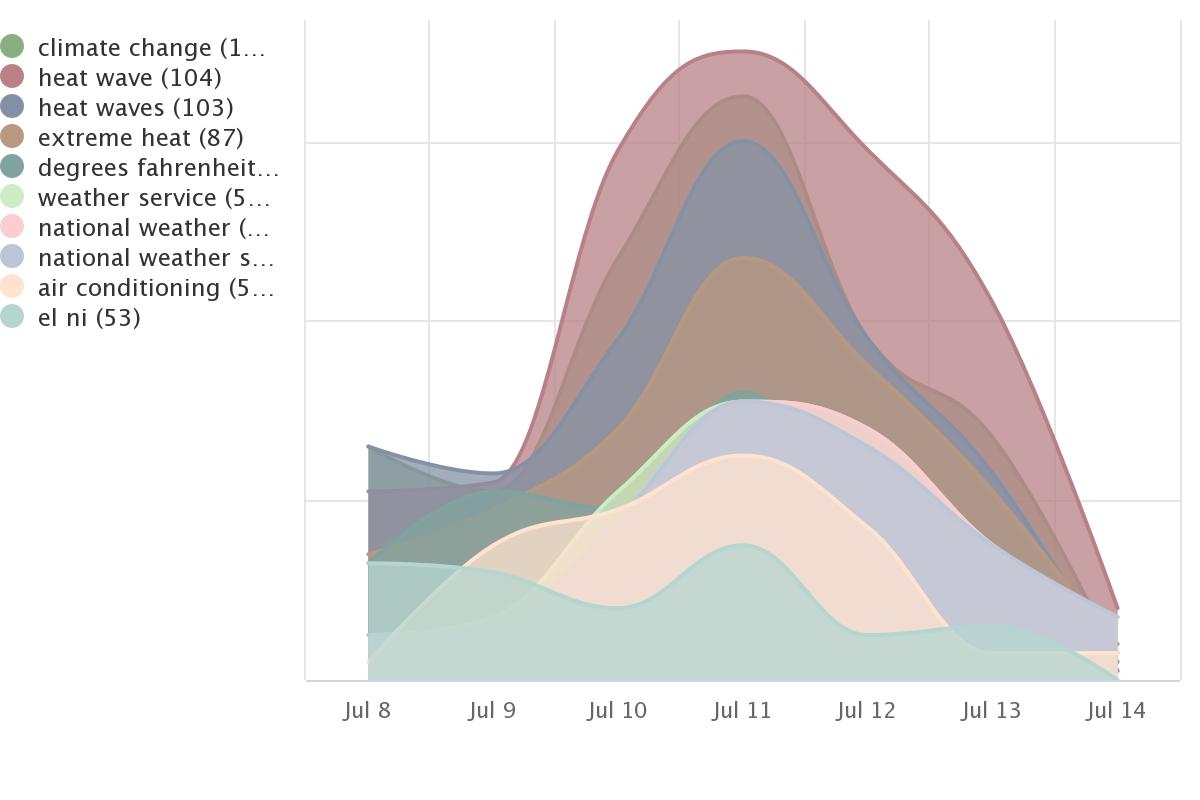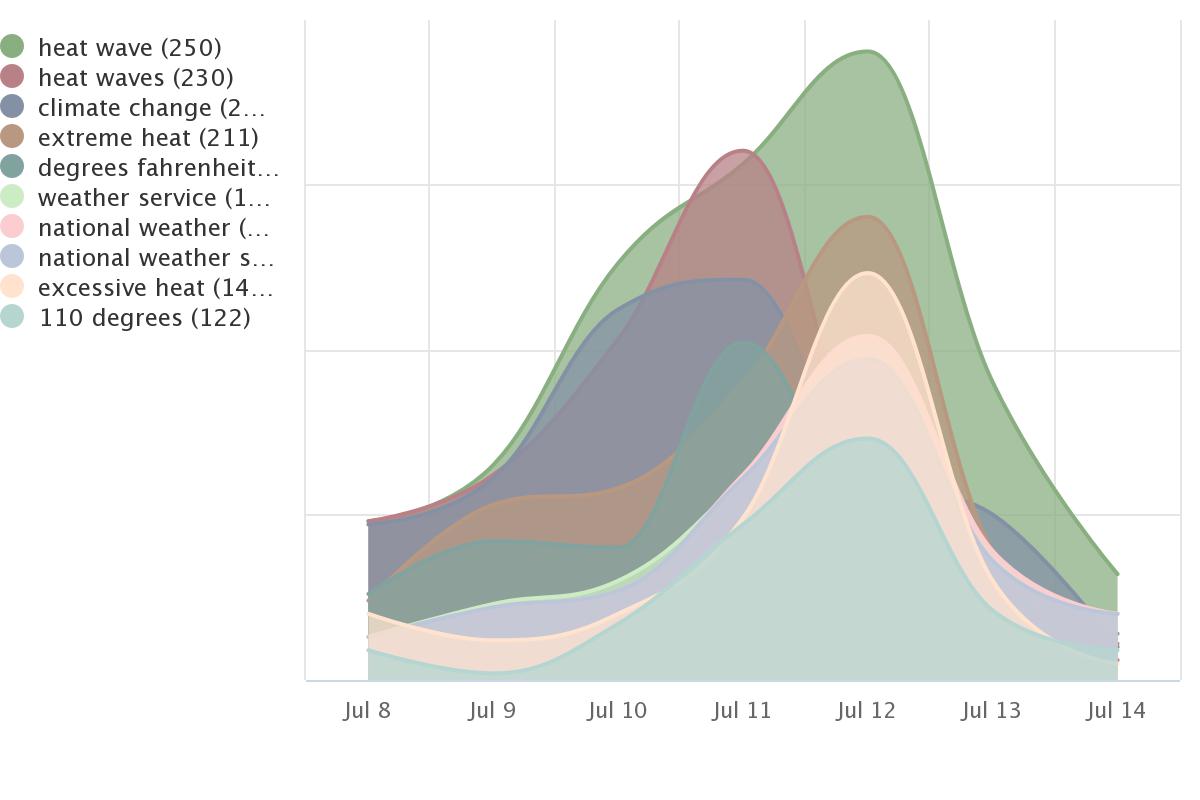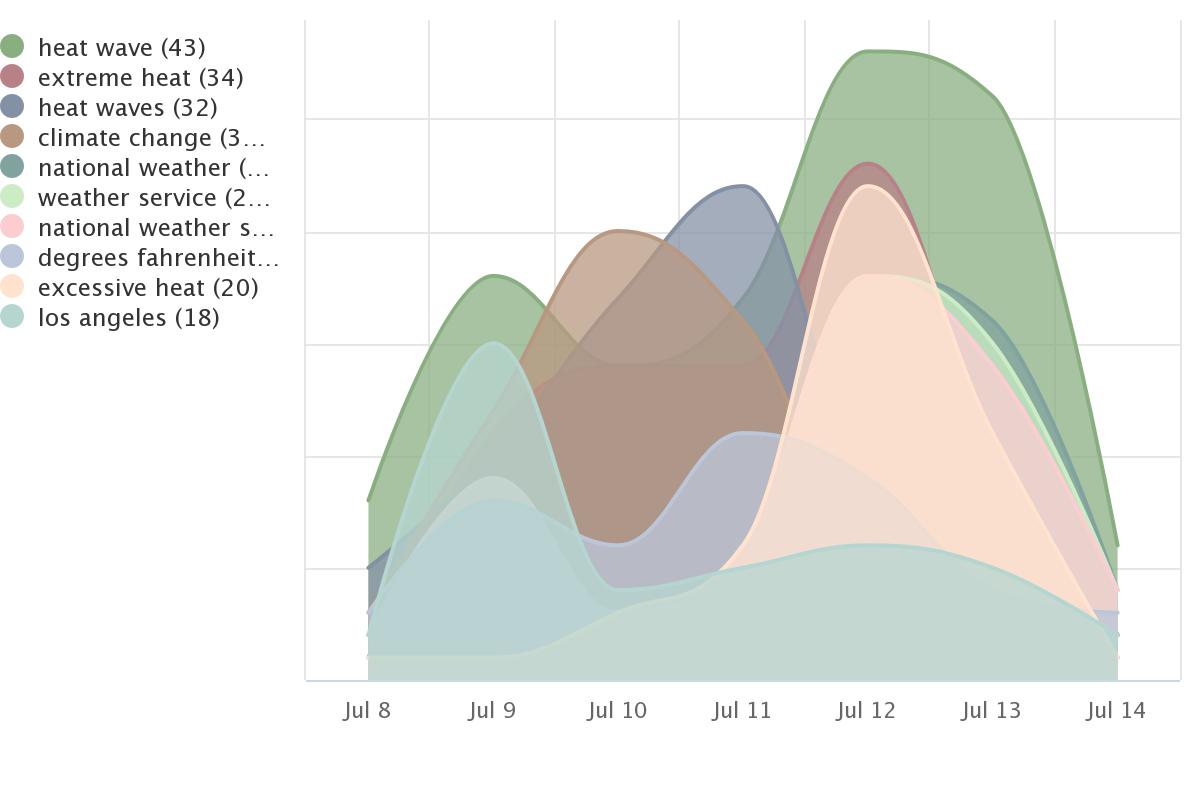
The media narrative surrounding extreme heat and climate change asserts that record-breaking temperatures in the USA and other parts of the world are causing health risks and other consequences. The key entities involved in this narrative include people, events, technology, and organizations such as Twiga, the National Weather Service, and the Aerial Firefighting Squadron.
Our Kudzu Narrative Intelligence briefs auto-update every few hours with fresh analysis:
The issue of extreme heat and its associated health risks is a major concern in the current narrative. Key points include:
The issue of climate change and its connection to record-breaking temperatures is another focal point of the narrative. Key points include:
The consequences of extreme heat and record-breaking temperatures are being discussed in the narrative, with a focus on regional impacts. Key points include:
The top surfaced keywords in all sources in U.S. media provide valuable insights into the narratives surrounding extreme heat and climate change. Here are some key observations:
Keywords unique to left-leaning U.S. media outlets reveal additional aspects of the narrative surrounding extreme heat:
Keywords unique to right-leaning U.S. media outlets shed light on the specific narratives prevalent in these sources:
In conclusion, the surfaced keywords provide a comparative analysis of the narratives surrounding extreme heat and climate change in different media sources. The keywords reflect the varying emphasis on regional impacts, scientific analysis, and immediate weather conditions, offering valuable insights into the competing narratives surrounding this important issue.

Left-Leaning in U.S. Media

All Sources in U.S. Media

Right-Leaning in U.S. Media
Our Narrative Intelligence has conducted an analysis on bias in U.S. media, using our Narrative AI and Narrative Technology. The findings reveal significant differences in media coverage across political leaning, with a particular focus on left, left-center, right, and right-center sources.
The analysis shows that sources with the least bias accounted for 439 articles, while left-center bias sources accounted for 386 articles. Right-center bias sources had 160 articles, left bias sources had 132 articles, and right bias sources had the lowest coverage with only 33 articles.
Comparatively, left-center bias sources had almost double the coverage of right-center bias sources, and left bias sources had nearly four times the coverage of right bias sources. It is clear that there is a significant disparity in media coverage across different political leanings.
These insights on bias in U.S. media highlight the need for a comprehensive understanding of the media landscape and the potential impact of biased reporting on public perception. Our Narrative Intelligence will continue to provide valuable analysis and insights through our Kudzu Narrative Intelligence Briefs, utilizing our advanced Narrative AI and Narrative Technology.

U.S. Media
Note: Kudzu Narrative Intelligence briefs update every few hours. Very likely, the Narrative Analysis data visualization depicted in the graphic above will have changed as well.
Image Credit for Article Header: Chris Yarzab, CC BY 2.0, via Wikimedia Commons